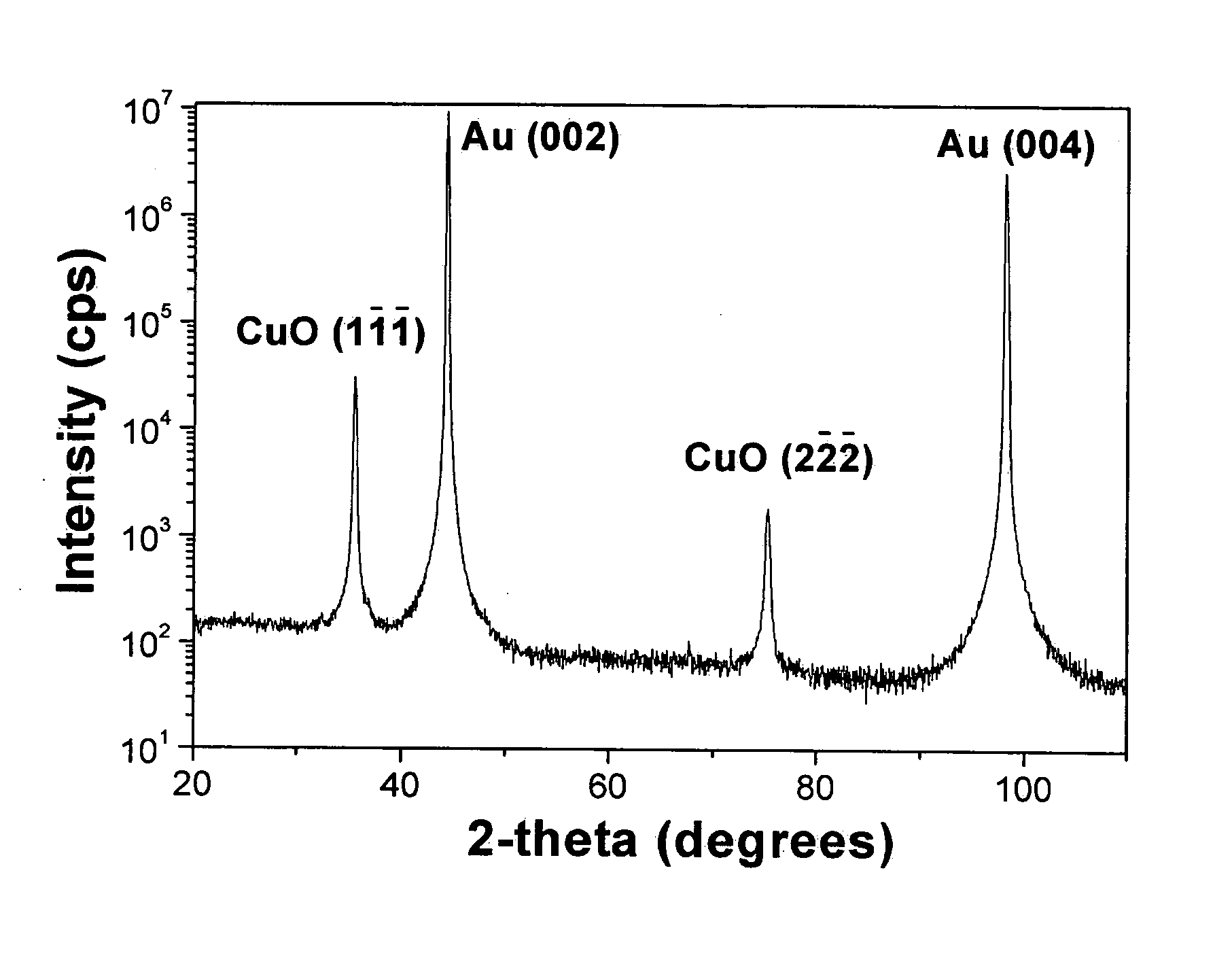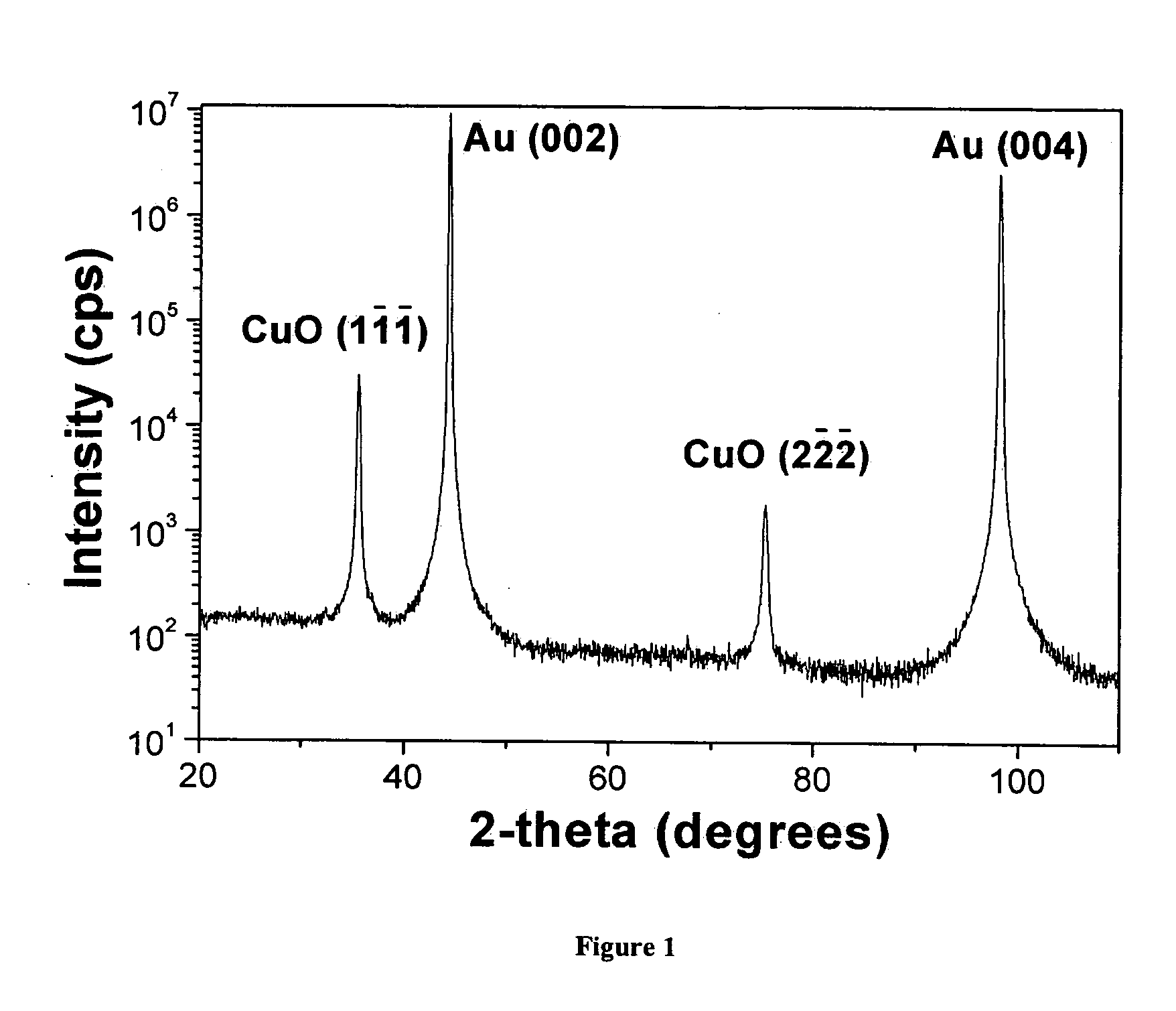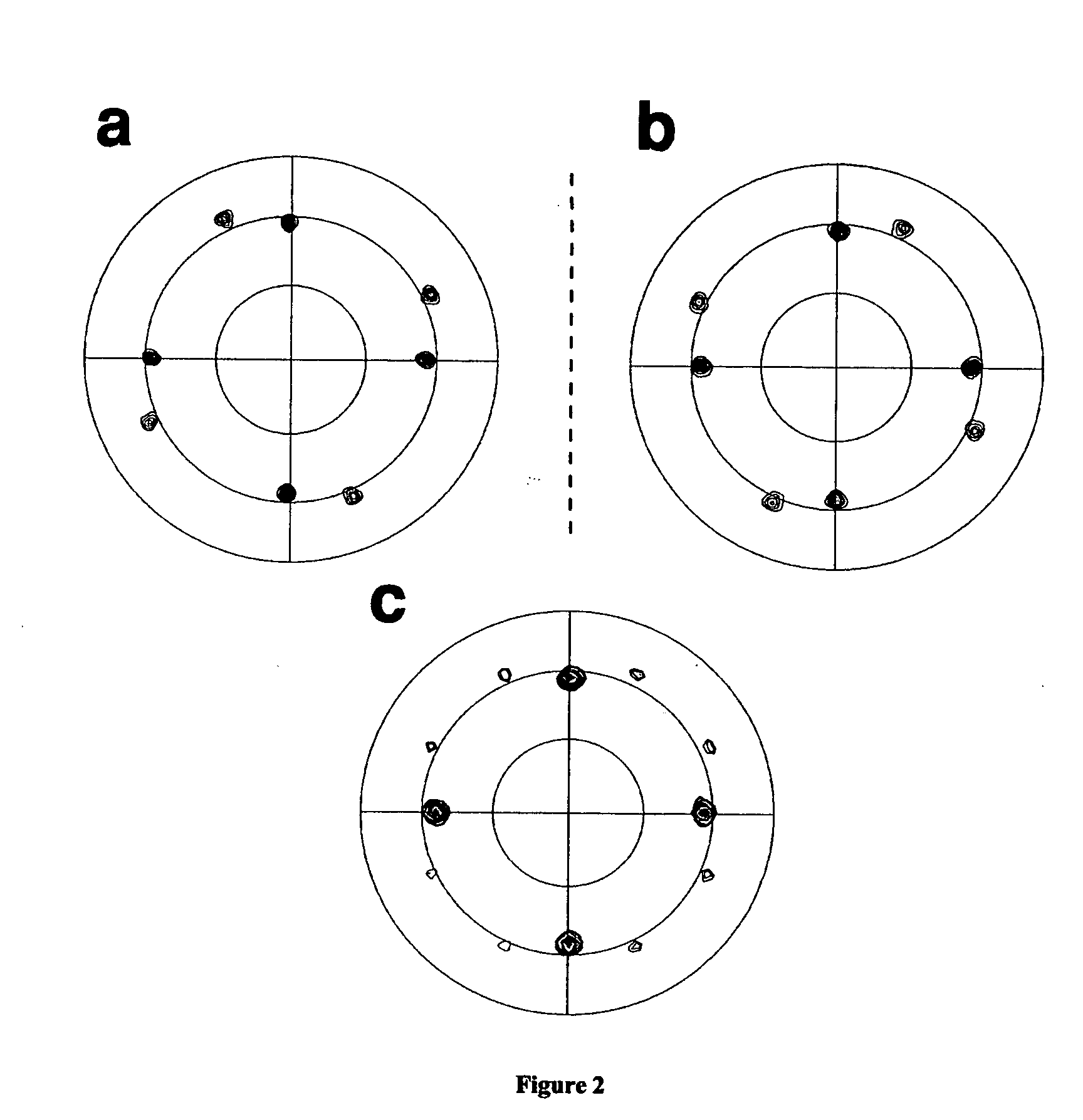Enantiospecific catalysts prepared by chiral deposition
a technology of enantiospecific catalysts and chiral synthesis, which is applied in the direction of physical/chemical process catalysts, metal/metal-oxide/metal-hydroxide catalysts, electrolytic organic production, etc., can solve the problem of currently believed that there are no commercially useful heterogeneous catalysts for chiral synthesis
- Summary
- Abstract
- Description
- Claims
- Application Information
AI Technical Summary
Benefits of technology
Problems solved by technology
Method used
Image
Examples
example 1
Example 1
[0021] Deposition of CuO Films on Au(001)
[0022] The CuO films in this study were deposited using the general method of P. Poizot et al., Electrochemical and Solid State Letters, 6, C21-C25 (2003). The CuO films were deposited to a thickness of about 300 nm at 30° C. onto a polished and H2-flame-annealed Au(001) single crystal at an anodic current density of 1 mA / cm2 from an aqueous solution of 0.2 M Cu(II), 0.2 M tartrate ion, and 3 M NaOH. The electrodeposited CuO has a monoclinic structure (space group=C2 / c) with a=0.4685 nm, b=0.3430 nm, c=0.5139 nm, and β=99.080.
[0023] X-ray diffraction measurements were done on a high-resolution Philips X'Pert MRD diffractometer. For the Bragg-Brentano scan the primary optics module was a combination Gobel mirror and a 2-crystal Ge(220) 2-bounce hybrid monochromator, and the secondary optics module was a 0.18° parallel plate collimator. The hybrid monochromator produces pure CuKα1 radiation (λ=0.1540562 nm) with a divergence of 25 ar...
example 2
Example 2
[0025] Determination of Absolute Conflguration of Deposited Films
[0026] The absolute configuration of the electrodeposited films was determined by X-ray pole figure analysis. Pole figures can be used to probe planes which are not parallel with the geometric surface of the sample. The sample is moved through a series of tilt angles, χ, and at each tilt angle the sample is rotated through azimuthal angles, Φ, of 0 to 360°. Peaks occur in the pole figure when the Bragg condition is satisfied. Pole figures are shown in FIG. 2a and 2b for CuO films that were deposited from (R,R) and (S,S)-tartrate solutions, respectively. The (111) planes of CuO were probed because they are close in d-spacing to those of Au(111). Therefore, there are four peaks at χ=55° which result from the Au. These serve as an internal reference point for the CuO peaks. Overlapping with the four Au peaks are peaks due to CuO(1 {overscore (1)} 1) in FIG. 2a and CuO({overscore (1)} 1 {overscore (1)}) in FIG. 2...
example 3
Example 3
[0030] Electrochemical Oxidation Of Tartrate
[0031] The pole figures show that the films grown in (S,S) and (R,R)-tartrate are enantiomers, but they do not provide information on the chirality of the surface. In order to probe the surface chirality, the electrochemical activity for films deposited in the two solutions was compared for the electrochemical oxidation of (R,R) and (S,S)-tartrate. CuO has been shown by other workers to be a potent electrocatalyst for the oxidation of carbohydrates, amino acids, simple alcohols, aliphatic diols, and alkyl polyethoxy alcohol detergents. See, e.g., K. Kano et al., J. Electroanal. Chem., 372, (1994) and Y. Xie et al., Anal. Chem., 63, 1714 (1991). Chiral recognition by CuO has not been demonstrated previously. Linear sweep voltammograms are shown in FIG. 4 for the oxidation of (R,R) and (S,S)-tartrate on CuO electrodes which were deposited from Cu(II)(R,R)-tartrate (FIG. 4a) and Cu(II)(S,S)-tartrate (FIG. 4b). The linear sweep volta...
PUM
| Property | Measurement | Unit |
|---|---|---|
| Symmetry | aaaaa | aaaaa |
| Chirality | aaaaa | aaaaa |
Abstract
Description
Claims
Application Information
 Login to View More
Login to View More - R&D
- Intellectual Property
- Life Sciences
- Materials
- Tech Scout
- Unparalleled Data Quality
- Higher Quality Content
- 60% Fewer Hallucinations
Browse by: Latest US Patents, China's latest patents, Technical Efficacy Thesaurus, Application Domain, Technology Topic, Popular Technical Reports.
© 2025 PatSnap. All rights reserved.Legal|Privacy policy|Modern Slavery Act Transparency Statement|Sitemap|About US| Contact US: help@patsnap.com



